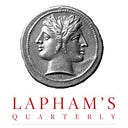Sight Unseen
A neighborhood along the Underground Railroad
By Alex Green
A s long as it has existed, Waltham, Massachusetts, has been a place where outsiders quietly come and go. Bisected by the Great Road, it was once one of few stops on the journey west from Boston to the Massachusetts frontier, nine miles out from the city along a series of wooded brooks that roll into the slow current and wide turns of the Charles River. When I moved here fifteen years ago, people called folks like me a “breezer” — anyone who is not from here must just be breezing through, heading somewhere else, as if Waltham were still a village way station.
In the center of town there is a little hill traversed by a street named Mount Pleasant, and I live at the top. At the foot is a house with pale-blue wooden shingle siding, vaulted on a high stone foundation. Built around 1840, it was first occupied by a man named Samuel Locke, his wife Harriet, and their young son.
At the other end of the lane, Mount Pleasant runs into a street named Liberty. A house surrounded by flowers and fruit trees once stood where Liberty opens onto the bustling Great Road, now called Main Street. A man named Jarvis Lewis lived there with his family while operating an apothecary shop out of the front room.
